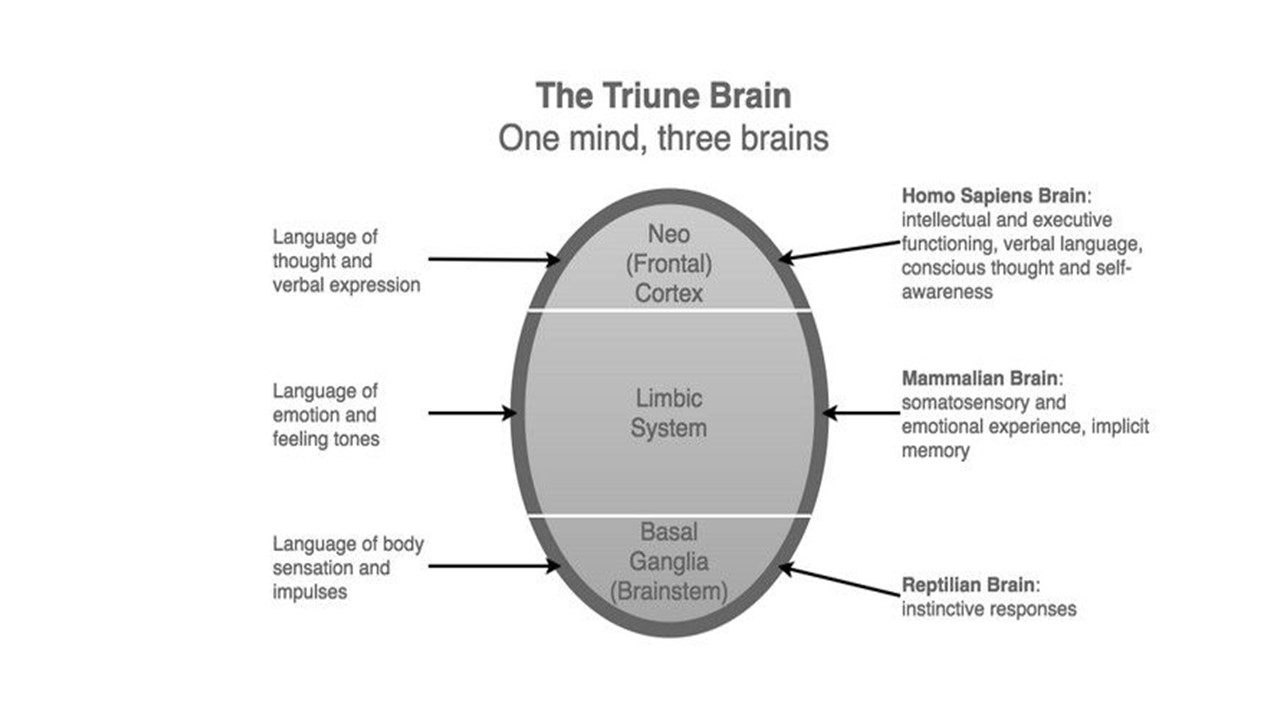
Figure 1. The Triune Brain

The emotional drives that emanate from the lower-and-middle parts of the brain have a significant impact on how we think, talk, and behave. As Solms’ states convincingly in his work, it is these emotional drives that form the basis of consciousness, (how can you be unaware of a feeling?) instinctively shaping our cognition in a way that enables us to meet our needs.
Needs, Drives, Feelings and Learning
Homeostasis and the difference between needs and drives
A need in this context is something autonomic. Physically we need to keep our body temperature within a certain range, a nonconscious process called homeostasis. It is only when these automatic responses no longer work — and we need to make a conscious choice — that this need becomes a drive. For example, if our body temperature drops below a certain level, we become aware of the drive to put on a jumper or turn up the heater. Our need to regulate our body temperature becomes a drive to put on a jumper when our autonomic homeostatic responses are no longer sufficient.
According to Solms this process of homeostasis also applies to our emotional needs and the seven primary emotional drives. An emotional need, like the need for self-efficacy (the belief you can achieve your goals) is one that sits within the range of homeostatic equilibrium. As shown above, a need becomes a drive when we become conscious of it — when it is prioritised in the mind, and we are required to choose a response. In the case of self-efficacy, our inability to meet our goals doesn’t feel good, an unpleasantness that triggers a drive to find new approaches. According to Solms, it is this tipping outside of homeostatic balance — experienced as a negative feeling — that triggers an emotional drive.
Download Article 1K Club
















